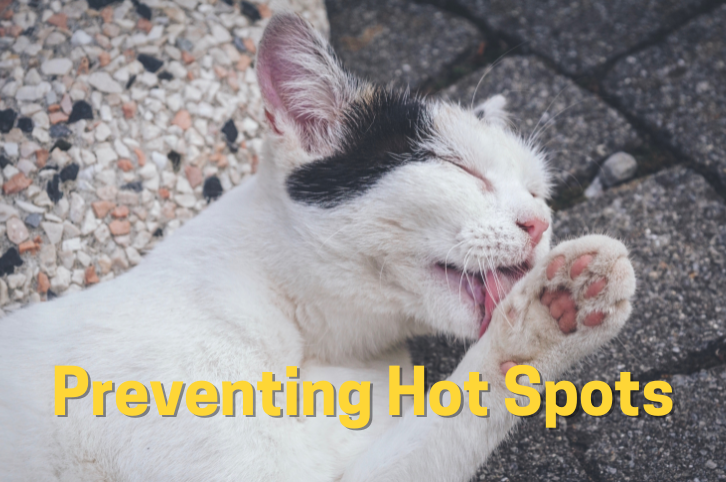Does your pet suffer from hot spots? Hot spots are a common problem during the summer months and can significantly impact your pet’s wellbeing. Luckily, our team at Cloquet Animal Hospital is here to help your pet’s skin problems.
Here is what you need to know about hot spots and how to prevent them in your pet.
What is a Hot Spot?
Hot spots are also known as acute moist dermatitis and are localized areas of skin irritation. A hot spot occurs when licking, chewing, or scratching the skin, and causes inflammation and secondary bacterial infection. Because of this, anything that causes your pet to itch can be a potential trigger for a hot spot. This includes parasites, allergies, or other contact irritants. Additionally, some pets exhibit excessive licking when they are stressed or bored.
Hot Spot Prevention – How You Can Help
Hot spots can be extremely uncomfortable for your furry friend and challenging to treat. Here are a few ways you can help prevent them from occurring.
- Understand the Cause
The first step in preventing hot spots in your pet is to know what is causing the initial itch or discomfort. Treating the underlying cause is critical for improving your pet’s comfort and preventing hot spots from occurring. Treatment can vary depending on your pet’s underlying condition. However, parasite prevention and practicing good hygiene are great places to start.
If your pet has had skin issues in the past, consider setting up an appointment to have them evaluated by our veterinary team. We can ensure their skin needs are taken care of and make recommendations based on your pet’s unique needs.
- Keep Your Dog’s Coat Dry
During the hot summer months, many pets enjoy a cool swim or get more frequent baths after playing outside. Unfortunately, the summer humidity can make it difficult for your pet’s hair coat to dry. This excess moisture can cause significant skin irritation and increase your pet’s risk of developing a hot spot.
After a swim or bath, take some extra time to thoroughly dry your pup. Pay close attention to their undercoat, where moisture is most likely to get trapped. You can also use a brush to help air out their coat and speed up the drying process.
- Know the Signs
While taking steps to prevent hot spots from occurring is critical, it’s also important to understand the signs of a problem. This can help you catch a hot spot early and take steps to prevent your pet’s condition from worsening.
Some of the signs you should look for include:
- Excessive Licking
- Redness or Irritation
- Crusted or Matted Hair
- Hair Loss
- Moist Skin or Discharge
If your pet is experiencing any of these issues, it’s important to start treatment as soon as possible. You can start by keeping the area clean and dry. Clipping the hair around the hot spot can be helpful, and your pet may need to wear a cone that prevents them from irritating the area further.
Some pets may require additional care, such as topical or oral medications. If your pet’s condition is not improving, give us a call so we can help.
Final Thoughts
As the summer heats up, hot spots can become a serious concern for your furry friend. Taking certain precautions can help reduce your pet’s risk of skin irritation and keep hot spots at bay.
If you have additional questions about your pet’s skin condition or need to have your pet evaluated, please give us a call at 218-879-9280. We hope these tips will help prevent hot spot problems and allow your pet to enjoy a healthy and happy summer.
Image credit: Pexels

